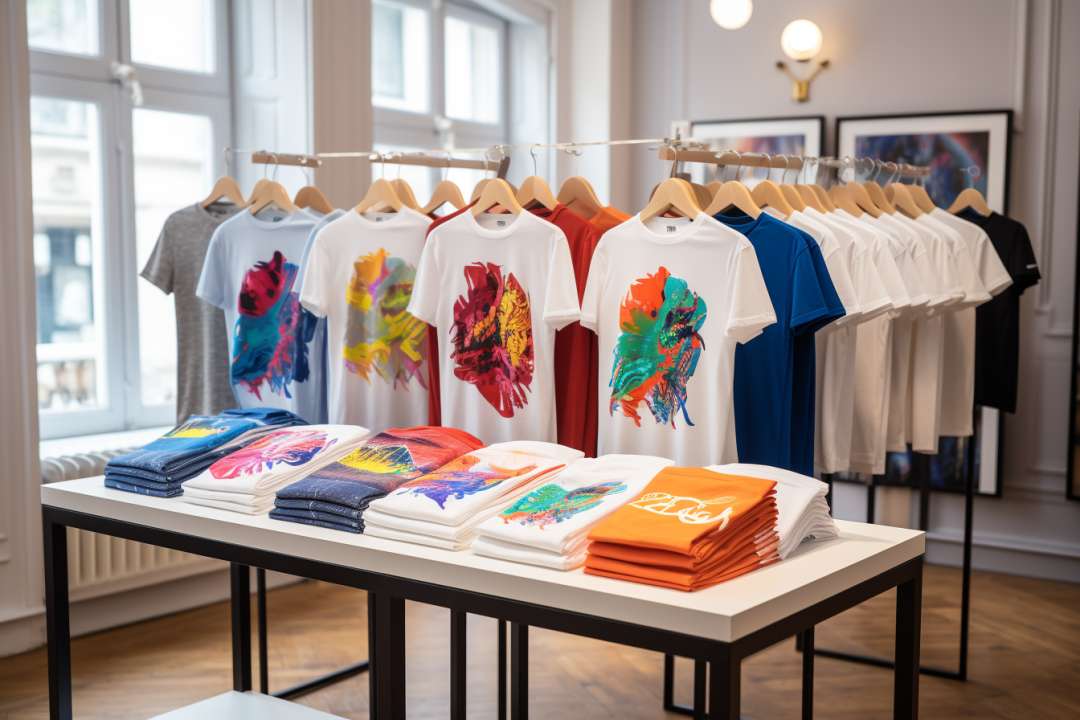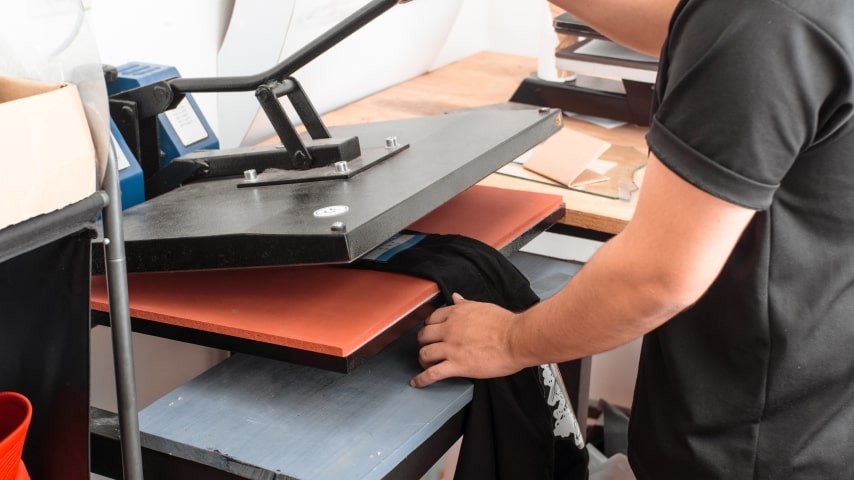Releasing Creativity with Heat Transfer Vinyl Printing for Customized Designs
Releasing Creativity with Heat Transfer Vinyl Printing for Customized Designs
Blog Article
From Typical to Digital: Understanding the Advancement of Cloth Printing
The makeover of cloth printing from conventional approaches like block printing and stand up to dyeing to contemporary methods such as display and digital printing marks a considerable change in the fabric industry. Standard approaches, soaked in artisanal craftsmanship and cultural significance, have gradually offered means to electronic developments that provide unmatched precision, effectiveness, and customization. This transition not only improves production abilities but additionally straightens with expanding needs for lasting techniques. Yet, how do these developments impact the essence of fabric printing, and what might the future hold for this ever-evolving craft?
Standard Towel Printing Techniques
In the very early stages of fabric production, typical fabric printing approaches served as the cornerstone of material design, supplying both performance and artistic expression. Block printing, one of the earliest techniques, included sculpting elaborate layouts into wood blocks, which were then dipped in color and pressed onto textile.
Withstand dyeing, consisting of techniques like batik and tie-dye, utilized wax or other compounds to prevent color from penetrating specific areas of the textile. This method developed striking contrasts and elaborate layouts, usually imbued with cultural significance. Stenciling, one more standard method, entailed reducing patterns right into a product and applying dye through the openings, offering an easier yet effective means to produce repeated designs.
These conventional methods not only shaped the fabric market's early growth yet additionally prepared for future technologies. Each strategy mirrored the social and local characteristics of its origin, preserving and sharing artisanal expertise through generations.
The Rise of Display Printing
Just how did display printing change the landscape of fabric style? The development of display printing in the early 20th century marked a considerable departure from conventional methods, offering unprecedented flexibility and effectiveness. This method involves pushing ink through a great mesh display that has been stenciled with a design, enabling high accuracy and uniformity. Display printing allowed developers to generate intricate patterns and vivid colors on textiles, which were previously challenging to accomplish with block printing or hand-painting techniques.
Among the crucial benefits of display printing is its ability to replicate complicated designs on a huge scale with impressive fidelity. This scalability made it profoundly prominent in the business textile sector, where automation without giving up quality is vital. Moreover, screen printing suits a wide variety of inks and dyes, broadening the scheme of structures and coatings available to designers.
In addition, the process is extremely versatile, ideal for various material kinds including cotton, silk, and synthetics. This flexibility, combined with its cost-efficiency for big runs, strengthened screen printing's function as a keystone of modern textile production. Thus, the surge of screen printing reinvented the sector, pushing the boundaries of what was feasible in textile style.

The Advent of Digital Printing
Structure on the impressive improvements brought by display printing, the textile industry experienced one more groundbreaking advancement with the advent of digital printing. Emerging in the late 20th century, digital printing changed the way designs are moved onto materials, using unmatched adaptability and efficiency. Unlike conventional techniques, which commonly called for considerable arrangement and substantial hand-operated treatment, digital printing employs computer-aided design (CAD) technology to produce intricate patterns straight onto the textile with high accuracy.
This advancement has enabled fabric suppliers to fulfill the expanding demand for personalization and on-demand production. By eliminating the demand for displays and plates, digital printing lowers preparations and reduces material waste, making it a more lasting alternative. The capability to print intricate pictures and a wide array of colors in a solitary pass has actually opened brand-new innovative opportunities for designers, promoting a surge in imaginative expression within the market.
In addition, electronic printing supports smaller sized batch manufacturing runs, which is particularly advantageous for specific niche markets and startup style brands. This technical leap has not only boosted operational performance however also equalized access to top quality fabric printing, establishing the phase for future developments in fabric style and manufacturing.
Comparing Methods: Standard Vs. Digital
While both digital and standard printing approaches have their own distinct benefits, they vary considerably in terms of process, performance, and environmental effect. Typical fabric printing, incorporating methods like block printing and display printing, entails hand-operated labor and detailed workmanship.
On the other hand, electronic printing utilizes advanced technology to transfer designs directly onto textile making use of inkjet printers. This approach uses unparalleled accuracy and a substantial variety of color choices, allowing extremely in-depth and elaborate styles. Digital printing is considerably faster, permitting fast turnarounds and just-in-time production, which lowers the requirement for big inventory storage space. Furthermore, it supports customization and tiny set production, dealing with contemporary consumer demands for customized products.
From an ecological point of view, electronic printing is typically extra lasting. It uses much less water and produces minimal waste contrasted to standard methods, which usually include considerable washing and coloring processes. Subsequently, electronic printing is significantly favored in a period where environmental considerations are extremely important.
Future Patterns in Towel Printing
As the textile market proceeds to evolve, future trends in fabric printing frequently direct in the direction of better integration of technology and sustainability. One substantial fad is the increased application of electronic printing technologies. These innovations permit higher precision, quicker production times, and the capability to produce intricate layouts that were as soon as challenging with traditional methods. Digital textile printing is expected to dominate the market, more helpful hints driven by its effectiveness and versatility to consumer demands for customized and limited-edition products.

Furthermore, the unification of wise textiles, which integrate digital components right into fabrics, is readied to transform the marketplace. These textiles can give added capabilities such as temperature guideline, health tracking, and interactive attributes. As innovation proceeds to advancement, the junction of digital printing and wise fabrics will open brand-new avenues for sublimation printing functional and innovative applications in fabric printing.
Verdict
The evolution of cloth printing from conventional techniques to digital developments marks a substantial transformation in the fabric sector. While typical strategies highlight artisanal workmanship and social heritage, digital printing provides unequaled precision, efficiency, and customization.
The makeover of towel printing from conventional methods like block printing and resist coloring to modern techniques such as display and electronic printing marks a considerable shift in the fabric market. Display printing allowed designers to produce intricate patterns and vibrant colors on fabrics, which were visit this site formerly testing to accomplish with block printing or hand-painting methods.
Structure on the exceptional developments brought by screen printing, the textile sector experienced one more groundbreaking advancement with the advent of electronic printing. DTF printing. Standard cloth printing, incorporating techniques like block printing and screen printing, entails hands-on labor and intricate craftsmanship. As modern technology continues to development, the intersection of digital printing and clever textiles will open up new methods for creative and practical applications in cloth printing
Report this page